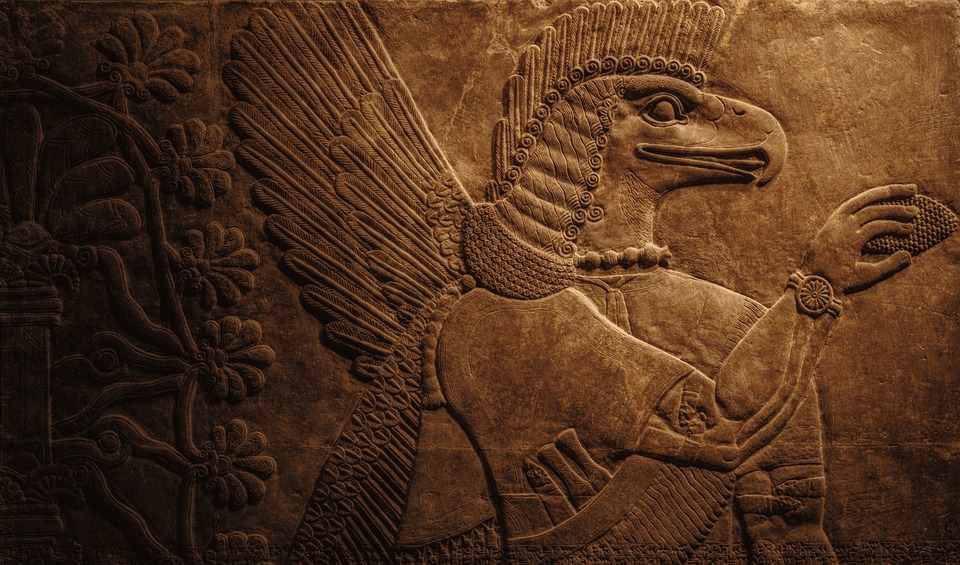
The role of ancient priests’ sky observations in the development of mathematics cannot be underestimated. Since ancient times, humans have been fascinated by the stars and have sought to understand their movements and patterns. The study of the stars led to the development of mathematics, as ancient priests used their knowledge of the sky to develop mathematical concepts such as geometry, trigonometry, and calculus.
One of the most important mathematical concepts inspired by the sky observations of ancient priests is geometry. Geometry is the branch of mathematics that deals with the properties and relationships of points, lines, angles, and shapes. Ancient priests used their knowledge of the stars to develop the basic principles of geometry. They observed that the stars moved in predictable patterns and that the movements of the stars could be described using geometric shapes. For example, the priests observed that the stars appeared to move in circles around the Earth. This observation led to the development of the concept of the circle, which is a fundamental shape in geometry. The priests also observed that the stars appeared to move in straight lines, which led to the development of the concept of the line.
The ancient Egyptians were particularly skilled in using geometry to make precise measurements. They used geometry to survey land, build pyramids, and construct other architectural marvels. For example, the Egyptians used a system of ropes and stakes to mark out the boundaries of their fields. By using geometry, they were able to calculate the area of their fields and determine how much seed was needed for planting.
Trigonometry is another important mathematical concept inspired by the sky observations of ancient priests. Trigonometry is the branch of mathematics that deals with the relationships between the sides and angles of triangles. The priests observed that the movements of the stars could be described using triangles. For example, the priests observed that the height of the Sun in the sky changed over the course of a day. By measuring the length of the shadow cast by a stick, the priests were able to calculate the height of the Sun above the horizon. This measurement could be used to calculate the length of a day and to determine the time of year.
The Babylonians were particularly skilled in using trigonometry to make accurate predictions of astronomical events. They used their knowledge of trigonometry to predict the movements of the planets and the timing of eclipses. The Babylonians were also the first to use the concept of the angle in their astronomical calculations. They divided the circle into 360 degrees, a system that is still used today.
Calculus is another mathematical concept that was inspired by the sky observations of ancient priests. Calculus is the branch of mathematics that deals with rates of change and the accumulation of small changes over time. The priests observed that the movements of the stars and planets were not always uniform. For example, the speed of the Moon changes over the course of a month. By measuring the changing speed of the Moon, the priests were able to develop the concept of calculus.
The ancient Greeks were particularly skilled in using calculus to make precise astronomical calculations. They developed the concept of the ellipse, which is a fundamental shape in calculus. The ellipse is a curve that describes the path of a planet around the Sun. The Greeks used calculus to calculate the area of the ellipse and to make predictions about the movements of the planets.
In conclusion, the sky observations of ancient priests played a crucial role in the development of mathematics. The priests used their knowledge of the stars to develop mathematical concepts such as geometry, trigonometry, and calculus. These concepts were used to make precise measurements, predict astronomical events, and make accurate astronomical calculations. The legacy of the ancient priests can still be seen in the mathematics we use today, from the geometry of buildings to the calculus used to make predictions about the movements of the planets. The study of the stars continues to inspire and inform our understanding of the universe, and it is a testament to the importance of the observations and discoveries made by the ancient priests.
Furthermore, the observations and calculations made by the ancient priests also had a profound impact on other fields beyond mathematics, including astronomy, navigation, and agriculture. Astronomy, in particular, was greatly influenced by the sky observations of ancient priests. They developed the first star charts, which were used for navigation and to track the movements of the planets and stars. The Babylonians, for example, developed a sophisticated system of astronomy that allowed them to predict the positions of the planets with remarkable accuracy.
The ancient priests also made important contributions to agriculture through their observations of the stars. They used their knowledge of the stars to develop a calendar system that was based on the movements of the Sun, Moon, and stars. This calendar system allowed farmers to know when to plant and harvest their crops, based on the cycles of the Moon and the seasons of the year. The ancient Egyptians, for example, used a calendar system that was based on the rising and setting of the star Sirius, which was an important marker for the beginning of the Nile flood.
In conclusion, the role of ancient priests’ sky observations in the development of mathematics was significant and far-reaching. Their observations and calculations led to the development of mathematical concepts such as geometry, trigonometry, and calculus, which are still used today in a wide range of fields. The study of the stars also had a profound impact on other fields beyond mathematics, including astronomy, navigation, and agriculture. The contributions of the ancient priests to our understanding of the universe and our ability to navigate it are still felt today, and their legacy serves as a reminder of the power of observation, curiosity, and inquiry.







